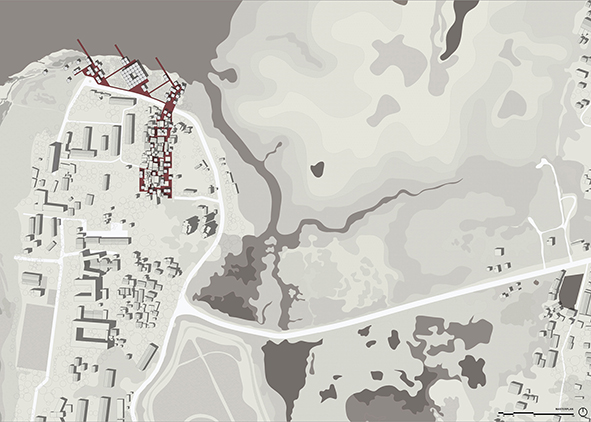On reversibility and architectural temporarity in marginal contexts
DOI:
https://doi.org/10.19229/2464-9309/4112018Keywords:
developing countries, precariousness, impermanence, prototype, experimentationAbstract
The essay puts forward experimental research carried out in emergency contexts and in developing countries with the study of temporary architecture of a health, cultural and social nature as a field of investigation. The proposed guidelines are built around emergencies, natural disasters, and the widespread need, in specific unpredictable situations of temporary and permanent shelter, or rather critical issues that may concern, at the same time, different social categories. This paper tries to identify some principles that have inspired proposals for measures in several contexts, from Sub-Saharan Africa, to the Middle East and to the South-East Asia where the temporariness and emergency issue is declined in a different way in reference to the typical characteristics of the reference context.
Downloads
Article Metrics Graph
References
Bologna, R. (ed.) (2002), La reversibilità del costruire – L’abitazione transitoria in una prospettiva sostenibile, Maggioli, Rimini.
Canella, G. (1966), Il sistema teatrale a Milano, Dedalo libri, Bari.
Canella, G. (1978), “Assumere l’emergenza che non finisce”, in Hinterland, n. 5-6, pp. 2-3.
Falasca, C. (2000), Architettura ad assetto variabile – Modelli evolutivi per l’habitat provvisorio, Alinea, Firenze.
Neutra, R. (1948), Arquitetura social em paises de clima quente, Gerth Todtmann, São Paulo.
Ramahi, H. (2015), Education in Palestine – Current Challenges and Emancipatory Alternatives, The American School of Palestine and University of Cambridge, El-Bireh.
Semerani, L. (1978), “Ricostruzione senza Rinascita”, in Hinterland, n. 5-6, pp. 4-8.

Downloads
Published
How to Cite
Issue
Section
License
This Journal is published under Creative Commons Attribution Licence 4.0 (CC-BY).
License scheme | Legal code
This License allows anyone to:
Share: copy and redistribute the material in any medium or format.
Adapt: remix, transform, and build upon the material for any purpose, even commercially.
Under the following terms
Attribution: Users must give appropriate credit, provide a link to the license, and indicate if changes were made; users may do so in any reasonable manner, but not in any way that suggests the licensor endorses them or their use.
No additional restrictions: Users may not apply legal terms or technological measures that legally restrict others from doing anything the license permits.
Notices
Users do not have to comply with the license for elements of the material in the public domain or where your use is permitted by an applicable exception or limitation.
No warranties are given. The license may not give users all of the permissions necessary for their intended use. For example, other rights such as publicity, privacy, or moral rights may limit how you use the material.


















































































